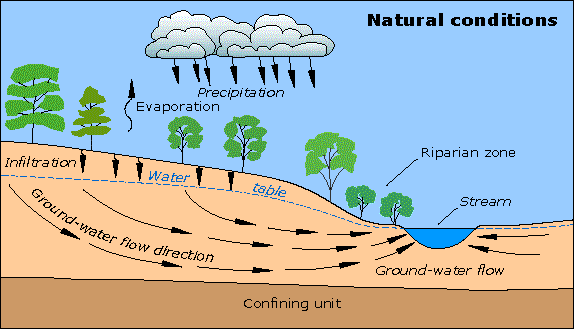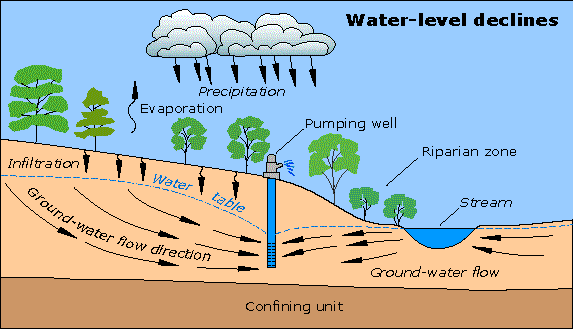Grading the ProPublica Series ‘Killing the Colorado’ on its Population Coverage
Published on August 21st, 2015
Not as Bad as Most, Not as Good as It Could and Should Be
We’ve said it before and we’ll say it again till we’re blue in the face: the news media as a whole get a failing grade in their coverage of population and the environment. A big fat “F.” If reporters were in journalism school taking a class on “thorough environmental reporting” they would almost all flunk it.
 |
|
Upstream of the Hoover Dam on the Colorado River – Lake Mead and its
infamous “bathtub ring” from falling water levels.
|
Collectively, the press all but ignores the negative impacts and unsustainable nature of overpopulation. If they were doing their job and safeguarding the public trust, as they like to believe they are, perhaps public ignorance and political indifference about overpopulation wouldn’t be so damn abysmal.
A recent series entitled “Killing the Colorado” by ProPublica, an independent, not-for-profit newsroom that likes to brag that it “produces investigative journalism in the public interest,” is a partial exception to this rule. It merits a “C.” Well, maybe a “C-.”
“Killing the Colorado” laments how “the river that sustains 40 million Americans is dying – and man, not nature, is to blame.” At least the blame is properly directed. So far, so good.
But by and large the series veers off the path to truth and understanding and into the ditch of disinformation because it mostly blames mismanagement, entrenched politics, obsolete incentives and unheeded science for the crisis the Colorado and its human dependents face. There is not enough attention given to the vertiginous growth in the sheer numbers of people demanding that this overexploited river be squeezed even harder to give up more water it just doesn’t have.
More and more, this is becoming an exercise of trying to squeeze blood from a stone.
In one piece in the series, “Less than Zero,” author Abrahm Lustgarten takes government officials and water managers to task for ignoring accepted science and miscounting (deliberately inflating) their water supplies. He accuses…
“Officials in the Colorado River basin states [of long treating] this liquid treasure as a type of environmental retirement account — an additional supply of water they can raid to get through the driest years and make up for the chronic overuse of the rivers themselves.”
What they deliberately ignore is the accepted science and inconvenient truth that surface and groundwater – rivers and aquifers – are not distinct and detached from one another. Instead, they are integral, intertwined parts of the same water system. Pumping aquifers can reduce surface flows and withdrawing surface water can reduce recharge to aquifers.
 The groundwater system is recharged by percolation of water from rain and snowmelt; groundwater in aquifers then flows toward streams and replenishes them.
The groundwater system is recharged by percolation of water from rain and snowmelt; groundwater in aquifers then flows toward streams and replenishes them.
Groundwater pumping lowers the water table and alters the direction of groundwater flow. Some water that flowed to streams does so no longer; indeed, some water may seep from streams into the groundwater system, thereby reducing the amount of streamflow.
Yet the two states confronting the gravest water crises – California and Arizona – are in denial when it comes to this geophysical reality. They continue inventorying and regulating surface and groundwater as if they were completely isolated from one another.
Lustgarten asserts that if California and Arizona were to stop, in effect, double-counting their water resources, farms and cities would be forced to face even more dramatic, painful cuts than they already do. It is a “political third rail” no politician interested in reelection is willing to touch.
Indeed, the states dependent on the Colorado River consume 21 billion gallons of groundwater a day, or 20 million acre-feet per year, equivalent to 1.5 times the annual flow of the Colorado. The unseen groundwater resource has been exploited as if it were bottomless and limitless.
Groundwater use was already unsustainable, and aquifer levels across the region were already dropping rapidly even before the current drought. Since the onset of the drought, things have worsened considerably – with water users and authorities substituting groundwater for shriveling reservoirs. Sixty percent of California’s current water use is now being supplied with groundwater, double the percentage in more normal times.
The “Less Than Zero” article accepts official population growth projections as a given that have to be accommodated and serviced at all cost. It makes no mention of the fact that the combined populations of five Southwestern states whose destinies are interwoven with the Colorado have exploded from 2 million in 1900 to 13 million in 1950 and to 45 million in 2000, with projections to 73 million by 2050.
Explosive population growth over the past century is not acknowledged as the main factor in today’s water shortages, while rosy projections of future growth are taken as gospel. The delusion that perpetual population growth can occur in a finite system is never challenged. Fundamental limits to growth do not register. The growth imperative trumps all.
Why is it so difficult for the media to acknowledge the biophysical reality that more people use up more resources and produce more waste? Or that there may be a limit to the number of people a given region and its resources can support?
-
Maybe the press ignores it because it’s just so glaringly obvious that it bores reporters to tears.
-
Maybe the press ignores it because it’s “old news.”
-
Maybe the press ignores it because it’s politically incorrect.
-
Maybe the press ignores it because they don’t see it as “punching up.”
-
Maybe the press ignores it because, like gravity, or water to a fish, it’s so ubiquitous it’s easy to miss.
 |
 |
 |
 |
| Twenty of the nation’s largest cities are in Western states that receive water from the Colorado River. And those cities are expected to grow. Phoenix is forecast to nearly double. Two million people will move to Denver. Another million will settle in San Diego. Here’s a look at how the West is becoming a regional “megalopolis.” |
|
Back in the 1990s, Professor T. Michael Maher of the University of Southwestern Louisiana conducted a study of news coverage of urban sprawl, endangered species and water shortages, all issues profoundly affected by population growth. In a random sample of 150 stories on those issues, he found only about one in 10 even mentioned population growth as one source of the problem. And only one of the 150 stories – less than one percent – mentioned that one part of the solution might be to try to stabilize the U.S. population.
But the ProPublica series as a whole does not flunk. I gave it a “C-” because there is at least some recognition of the population problem. The “Welcome to Fabulous Las Vegas … while water supplies last” interactive page has some impressive graphics depicting the cancerous growth of some of the larger cities reliant upon the Colorado River.
But to earn a “B” or an “A,” the series would have had to explore and strongly question the fantasy of limitless growth in a water-limited region, in at least one article. The population of the Southwest will not grow indefinitely, but will that be because it will continue to boom until it busts, as mindless bacteria do in a Petri dish, or yeast in a vat, or because a rational, thinking species took the proper steps to plan for and live within limits?
At the moment, that same species, Homo sapiens, mostly operates under the delusion of grandeur that natural, earthly limits don’t apply to him because of his big brain’s capacity for innovation. But that capacity is not infinite, and I hope we will realize that in time.




